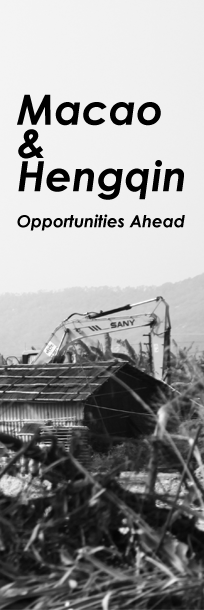
Can Factory Manufacture Art?
Ray, Chan Chi Hin
When the night falls, there is a gigantic graffiti drawing of a woman’s face glimmering on the entrance gate of an industrial building near Patane (沙梨頭). People may wonder why graffiti appears outside such an old building. The reason is simple because this factory is revitalized.
Macao manufacturing industry was once a flourishing industry, with about 1200 factories, but many stopped operating as time went by. According to Statistic and Census Service Bureau, from 2000 to 2010, 307 factories – about one-fourth of the whole - were closed down, leaving many industrial buildings abandoned.
In recent years, with the low rental price and spacious areas, many small-scale art groups have started moving into the industrial buildings, providing a space that seems to fit their needs. On the other hand, those factories get a chance to be reinvigorated as the art groups bring people back to those places.
Window Lei, owner of “Village”, said that it was lucky to find a space in industrial buildings. “Village” is a multi-functional space inside a factory at Patane, consisting of a studio for people to take photos, a stage for people to play music and street dance. Lei thought that teenagers need a space for showcasing their creativity on various fields. As “Village” covers many creative fields, the industrial building meets his needs and is also affordable to his limited budget.
“How can we find such a spacious place with this low rent in the commercial area? But we can find it in the industrial building,” said Vincent Cheang, president of Live Music Association (LMA), which is located at the factory near Avenida do Coronel Mesquita (美副將大馬路).
Cheang saw that there is a lack of places for playing live music in Macao so he has started this place for holding music shows. LMA becomes a space for various music shows, from hard rock music to pop music. Not only are foreign music groups invited but also the local bands. Due to the low rent, LMA sets the entrance fee of the show in an affordable range for the majority of the public.
However, the Land, Public Works and Transport Bureau of Macao has announced lately that the government notice there are many deserted industrial buildings and they have launched a set of measures to revitalize those buildings. They encourage property developers or the owner to transform the industrial buildings into residential buildings. Concerns arise among the tenants of the industrial buildings, especially the art groups. Will they be kicked out and disappear from the community?
“What I am doing now doesn’t count as a very great and contributing work but I guess I’ve put more effort on developing the creative industry than the government,” said Lei, who lamented that the support from the government is not enough.
He said places like “Village” can cultivate an atmosphere of art. The employees of “Village” were used to play on-line games at home. After the had been exposed to the cultural activities, they started to think about art and designing. One of them even opened an on-line boutique. She learned how to take photos to promote her clothes. He said that this kind of space provides a channel for people to interact with art.
In addition, the president of LMA said the industrial building next to LMA had already been bought by the property developer. He is so afraid that they will be next.
Cheang suggested that government should develop an art zone, like the 798 art zone in Beijing. He said that it would provide a better opportunity for the local creative industry. An art zone is better than “a space inside a factory”, which is the ultimate goal to him.
“Art should be open to the public instead of hiding behind the thick walls of a factory,” said Fortes Pakeong Sequeira, a local artist, whose studio is inside a plant at Mong-Ha (望廈).
Pakeong said he didn’t consider revitalizing factory for creative industry is the best idea. An art zone gives people a chance to recognize what the artists in Macao are doing, and confidence to the youth to start their career as an artist because they can see a brighter future.
Revitalized factory may be an alternative habitat for the creative industry. The above are only some suggestions and thoughts from the creative industry. Will there be more revitalized factories or a well-organized art zone? No one knows. However, as there are many abandoned factories, it is necessary for Macao government and every Macao citizens to think about how to make good use for these spaces.
“Art should be open to the public instead of hiding behind the thick walls of a factory.”
“I’ve put more effort on developing the creative industry than the government.”





